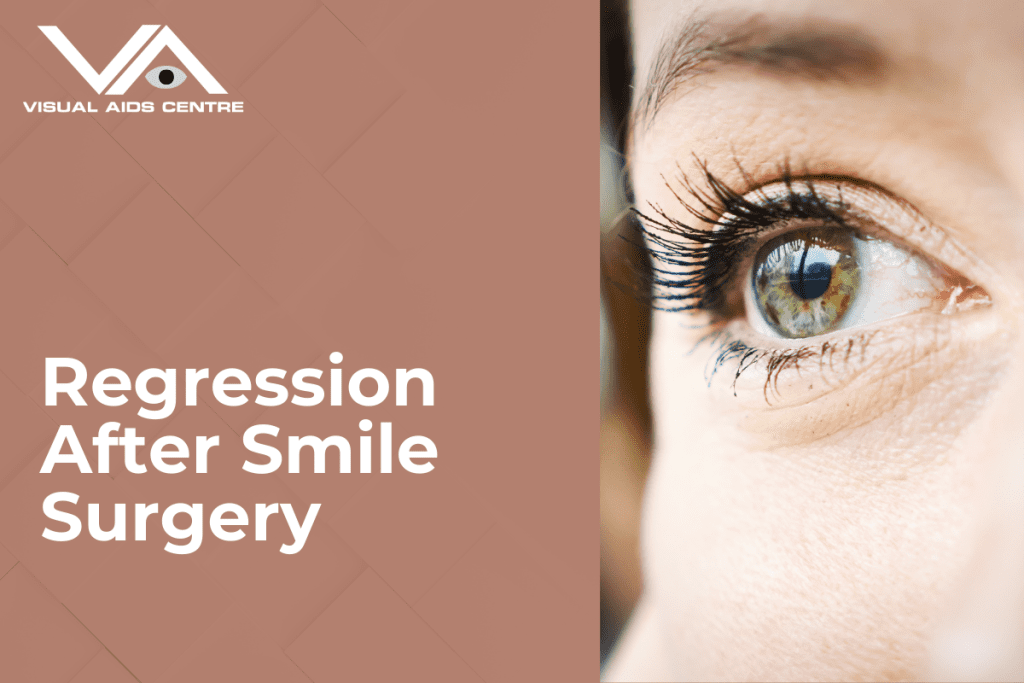Table of Contents
ToggleLaser vision correction surgeries have revolutionised the eye health landscape, with procedures such as SMILE (Small Incision Lenticule Extraction) boasting minimal invasiveness and rapid recovery times.
However, the desire for perfect, enduring vision post-surgery often runs counter to the potential of regression – a puzzling phenomenon where improved vision deteriorates over time.
For eye health enthusiasts and individuals contemplating SMILE surgery, understanding regression is crucial not only for informed decision-making but also for setting realistic post-operative expectations.

What Exactly is Regression, and Why is it Relevant to SMILE?
Regression post-SMILE surgery is an intricate topic that deserves exploration.
Defined as a partial loss of the corrective laser reshaping effects, regression can lead to a patient’s need for secondary corrective steps.
After all, SMILE targets myopia (nearsightedness) by reshaping the cornea so light focuses precisely on the retina, effectively neutralising blurry vision. However, various factors can subtly alter the cornea’s shape, leading to a decline in visual acuity post-surgery.
The Science Behind Regression
Understanding the underlying mechanisms of regression can demystify this post-surgical challenge. Here are the potential scientific explanations for regression:
- Epithelial Thickness Changes:
The corneal epithelium, healing from the surgical intervention, can thicken imperceptibly, impacting corneal shape and, thereby, vision. - Stromal Remodeling:
Deeper, structural healing processes within the cornea post-SMILE may lead to changes in the corneal contour, contributing to regression. - Natural Myopia Progression:
It’s important to recognise that SMILE surgery doesn’t halt the eye’s natural changes. Some patients experience myopia progression unrelated to the surgery, contributing to regression. In essence, while the immediate impact of SMILE is a boon to vision, the eye’s healing responses and natural myopia progression can subtly annul some of these gains over time.
Who is at Greater Risk?
Not all SMILE recipients face an equal risk of regression. Certain demographics and pre-existing conditions can make you more susceptible, including:
- Initial Myopia Severity:
Higher levels of myopia (greater than -10 diopters) inversely correlate with the likelihood of regression – the greater the initial correction, the higher the potential for later regression. Factors contributing to this include increased thickening of the corneal epithelium, under-correction, and heightened corneal wound healing reactions in comparison to treating mild myopia. - Age Factor:
Younger patients can face a higher risk of regression linked to natural myopia progression, as their eyes are more likely to keep growing and changing. - Genetic Factors:
Personal and familial history of myopia can be harbingers of ongoing eye changes that affect post-surgical stability.
The Spectrum of Regression
It’s crucial to contextualise regression on a spectrum. For many SMILE patients, any regression that does occur is often minor, with little impact on daily activities.
However, in some cases, the degree of regression can necessitate corrective action. The goal post-regression is to maintain a quality of vision that meets the patient’s expectations and lifestyle needs.
Addressing Regression: A Proactive Approach
In the event that you experience vision changes after SMILE, there are proactive steps that you and your doctor can take:
- Regular Monitoring:
For minor changes, your ophthalmologist might advocate a ‘wait and watch’ approach, monitoring your vision for any significant shifts. - Enhancement Procedures:
When regression warrants intervention, enhancement procedures can further improve the initial correction, restoring vision to its optimal state after surgery. These procedures may involve converting the cap into a flap or utilising the LASIK or PRK technique.
By addressing regression head-on, patients can often enjoy long-term satisfaction with their SMILE experience.
Long-term Prospects and Regimen Maintenance
Accessing the upper echelons of satisfaction post-SMILE often hinges on a comprehensive approach to long-term eye health. From adhering to prescribed regimens for post-operative care to maintaining regular check-ups and adopting lifestyle adjustments as recommended by your ophthalmologist, a diligent patient plays a key role in mitigating the risk of regression.
Summing Up SMILE and Potential Regression
Where vision is concerned, glasses-off clarity is the ultimate goal of surgeries like SMILE.
While the spectre of regression can seem daunting, a thorough understanding of the factors at play empowers patients to make informed decisions and ensures that, even in the wake of regression, their eye health narrative has a favourable next chapter.
Through open and continuous dialogue with your eye care professionals, navigating potential regression after SMILE surgery can be both manageable and informative, allowing you to fully appreciate the long-term benefits of this innovative procedure.













